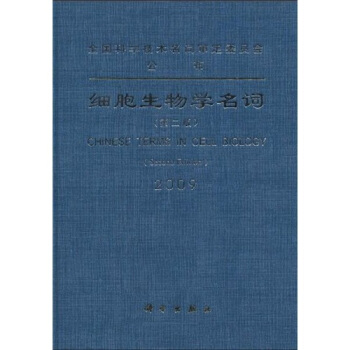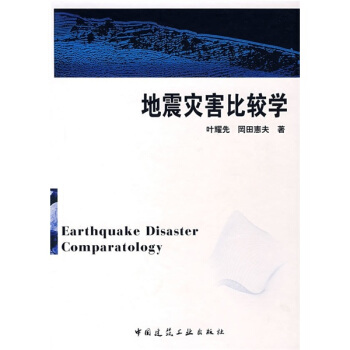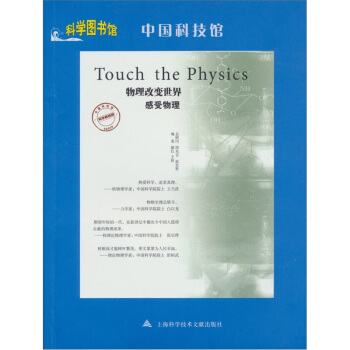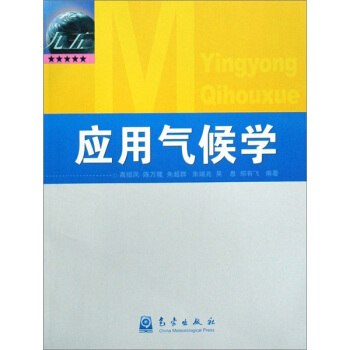![拓扑学教程:理论及应用 [Introduction to Topology:Theory and Applications]](https://pic.windowsfront.com/10126587/5652a67cNbcad82de.jpg)

具体描述
内容简介
The aim of the book is to give a broad introduction to topology for undergraduate students. It covers the most important and useful parts of point-set as well as combinatorial topology. The development of the materia is from simple to complex,concrete to abstract, and appeals to the intuition of the reader. Attention is also paid to how topology is actually used in the other fields of mathematics. Qver 150 illustrations, 160 examples and 600 exercises will help readers to practice and fully understand the subject.作者简介
Dr. Min Yan is a Professor at the Department of Mathematics of The Hong Kong University of Science and Technology. He has published numerous research papers in diverse areas of mathematics, including topology, combinatorics, Hopf algebra and integrable systems.内页插图
目录
1 Set and Map1.1 Set
1.2 Map
1.3 Counting
1.4 Equivalence Relation and Quotient
2.Metric Space
2.1 Metric
2.2 Ball
2.3 Open Subset
2.4 Continuity
2.5 Limit Point
2.6 Closed Subset
3.Graph and Network
3.1 Seven Bridges in KSnigsberg
3.2 Proof of One-Trip Criterion
3.3 Euler Formula
3.4 Application of Euler Formula
4 Topology
4.1 Topological Basis and Subbasis
4.2 Open Subset
4.3 Topological Space
4.4 Comparing Topologies
4.5 Limit Point and Closed Subset
4.6 Closure
5 Basic Topological Concepts
5.1 Continuity
5.2 Homeomorphism
5.3 Subspace
5.4 Product
5.5 Quotient
6. Complex
6.1 Simplicial Complex
6.2 CW-Complex
6.3 Projective Space
6.4 Euler Number
7 Topological Properties
7.1 Hausdorff Space
7.2 Connected Space
7.3 Path Connected Space
7.4 Connected Component
7.5 Compact Space
7.6 Limit Point Compact Space
8 Surface
8.1 Manifold
8.2 Surface
8.3 Simplicial Surface
8.4 Planar Diagram
8.5 Cut and Paste
8.6 Classification of Surface
8.7 Recognition of Surface
9 Topics in Point Set Topology
9.1 Normal Space
9.2 Paracompact Space
9.3 Complete Metric Space
9.4 Baire Category Theorem
9.5 Infinite Product
9.6 Space-Filling Curve
9.7 Space of Maps
Index
前言/序言
For mathematicians. topology is a fundamental mathematical language widely used in many fields. For students,topology is an intellectually challenging and rewarding subject. This textbook aims to address the subject of topology from both angles. The development of the content is based on the following considerations.First,the topology theory has the point set as well as the combinatorial(or algebraic) aspects. This book intends to give students a more comprehensive view of topology. So materials in point set topology and combinatorial topology are arranged in alternating chapters. Of course only the most basic topics can be covered in a semester. This means point set topology up to Hausdorff. connected,and compact properties,and combinatorial topology up to the Euler number and the classification of surfaces. A final chapter is added to cover the important and useful topics in point set topology. The topics in the final chapter are not covered in my lecture.
Second. the basic topological theory is a tool used for describing certain aspects of mathematics. So we should keep in mind how the topology is actually used in the other fields 0f mathematlcs. For example. the topologies are always iutroduced from topological basis or subbasis in practical applications. Therefore this book introduces the topological basis before the concept of topology, and emphasizes how to“compute”the topological concepts by making use of topological basis.
Third,the theory of point set topology can be very abstract. and the axiomatic approach can be daunting for students. This book starts with metric spaces,which is more concrete and familiar to students. The topological concepts are defined from the viewpoint of metrics but are quickly reinterpreted in terms of balls. Later on,by replacing the balls with the topological basis,students can easily understand the same concepts in the more abstract setting.
Fourth,the effective learning of abstract theory requires lots of practice. The book contains plenty of exercises. Moreover,the exercises immediately follow discussions,instead of being listed separately at the end of sections. Many exercises require the students to compute topological concepts in very specific and concrete topological spaces. There are also many exercises that ask the students to prove some basic results,some of which are used in the proofs.
The book was originally the lecture note for my topology course in The Hong Kong University of Science and Technology.1 would like to thank the university and enthusiastic students for their support.
用户评价
当我拿起这本书时,脑海中浮现的,是一个关于形状和空间的宏大叙事。我一直对那些能够解释宇宙万物本质的理论充满好奇,而拓扑学,这个听起来就充满哲学意味的学科,似乎提供了一种全新的视角来审视我们所处的世界。我希望这本书能够带领我穿越时空的界限,去探索那些超越我们日常直觉的空间形态。那些关于“不动点定理”的讨论,是否会涉及到我们熟悉的牛顿迭代法?抑或是更深层次的数学分析?我更期待的是,这本书能否将拓扑学的思想巧妙地融入到实际应用中,例如在计算机科学中的数据结构分析,或者在物理学中的弦理论研究。当我看到书中可能出现的那些精美的插图,能够形象地展示那些高维空间的概念,比如克莱因瓶或者四维超立方体,我一定会感到由衷的兴奋。我希望这本书能够点燃我对科学探索的热情,让我相信,即使是看起来最抽象的数学概念,也蕴含着改变我们认知世界的力量。
评分这本书的书脊设计就充满了艺术感,那种低饱和度的色彩搭配,仿佛诉说着一种沉静而深邃的智慧。我一直对那些能够揭示事物本质规律的学科抱有浓厚的兴趣,而拓扑学,这个名字本身就充满了神秘与探索的意味,无疑是我一直以来想要深入了解的领域。我希望这本书能够为我打开一扇通往抽象数学世界的大门,让我能够理解那些看似微不足道却又至关重要的数学概念。比如,书中对于“同胚”的定义,是否会用巧妙的比喻来解释,比如将一个咖啡杯变成一个甜甜圈?我期待能够通过阅读这本书,掌握一套严谨的数学语言,去描述和分析那些复杂的几何结构。同时,我也希望作者能够提供一些经典的应用案例,让我能够看到拓扑学的思想是如何在现实世界中发挥作用的,例如在网络拓扑结构的设计,或者在生物分子的研究中。
评分这本书的封面设计就很有吸引力,深邃的蓝色背景搭配简洁的银色字体,透露出一种严谨而又富有探索精神的学术气息。我第一次翻开它,就被扉页上的那句引言深深吸引:“宇宙的本质,或许就隐藏在那些我们尚未完全理解的曲折与连接之中。” 这句话瞬间勾起了我对数学抽象世界的无限遐想。我一直对那些能够解释自然界基本规律的理论感到着迷,而拓扑学,正如书名所暗示的那样,似乎正是通往这一神秘领域的一把钥匙。我期待书中能够有清晰的脉络,从最基础的概念讲起,循序渐进地引导读者进入这个奇妙的几何世界。比如,那些关于“连续变形”的比喻,如橡皮泥的拉伸与压缩,是否能够帮助我这个初学者理解那些看似抽象的定义?我希望作者能够用生动有趣的例子,将那些高深的定理变得触手可及,让我能够真切地感受到数学的魅力,而不是仅仅停留在枯燥的符号和公式堆砌上。当然,作为一本教程,理论的严谨性是必不可少的,我希望它在保持学术性的同时,也能照顾到不同背景的读者,避免过于艰深晦涩的表述。
评分这本书散发出的气息,是那种沉静而又充满力量的知识感。我一直对那些能够解释世界运行规律的学科着迷,而拓扑学,这个名字就仿佛在召唤着我去探索那些超越日常认知的空间本质。我希望这本书能够以一种清晰而又富有启发性的方式,为我揭示拓扑学的魅力。我想象着,书中可能会探讨“连通空间”的概念,是否会用现实世界的例子来解释?比如,一个岛屿和一片大陆的区别?我更期待的是,书中是否会包含一些关于“嵌入”和“浸入”的讨论,它们是如何帮助我们理解不同空间的关系的?我希望这本书能够不仅教授我知识,更能培养我解决问题的能力,让我能够运用拓扑学的思想去分析和解决那些复杂的实际问题。
评分我对这本书的期待,更多的是源于我对未知的好奇。我一直相信,数学是理解宇宙的通用语言,而拓扑学,作为一门研究空间性质的学科,一定蕴含着深刻的奥秘。我希望这本书能够以一种引人入胜的方式,引导我进入这个抽象而又美妙的数学领域。我想象着,书中会有一些关于“同伦”的介绍,是否会涉及到那些看似不可思议的连续变形?抑或是关于“同调论”的讲解,是否会揭示隐藏在复杂结构背后的简单规律?我希望这本书不仅仅是理论的堆砌,更能激发我的思考,让我能够独立地去探索和发现。我期待能够通过这本书,培养一种严谨的逻辑思维能力,以及一种对数学之美的深刻体悟。
相关图书
本站所有内容均为互联网搜索引擎提供的公开搜索信息,本站不存储任何数据与内容,任何内容与数据均与本站无关,如有需要请联系相关搜索引擎包括但不限于百度,google,bing,sogou 等
© 2025 book.coffeedeals.club All Rights Reserved. 静流书站 版权所有


![人的安全:概念及应用 [Human Security:The Concept and Its Application] pdf epub mobi 电子书 下载](https://pic.windowsfront.com/10159428/f23cc76b-3550-4a8a-b579-1ae56437d731.jpg)
![不动点理论导论(英文版) [Fixed Point Theory:An Introduction] pdf epub mobi 电子书 下载](https://pic.windowsfront.com/10184576/87eac2f0-9fdc-4693-91f8-6ef00a840c90.jpg)

![中国药用植物种子原色图鉴 [Illustrated seeds of Chinese medicinal plants] pdf epub mobi 电子书 下载](https://pic.windowsfront.com/10290953/488ceaa4-d632-4550-937d-109fc16de41f.jpg)






![量子力学简明教程 [Lectures on Quantum Mechanics] pdf epub mobi 电子书 下载](https://pic.windowsfront.com/10397939/89a5d535-b3be-4bb6-9b2e-0908d6606179.jpg)

![研究生系列教材:物理学前沿问题 [Frontier Topics in Physics] pdf epub mobi 电子书 下载](https://pic.windowsfront.com/10568852/3e7e4112-0be4-44ab-b95f-af48f89d001e.jpg)
![“十二五”国家重点图书:细胞力学进展(英文版) [Advances in Materials and Mechanics] pdf epub mobi 电子书 下载](https://pic.windowsfront.com/10695784/565524f3N82cd97c7.jpg)




